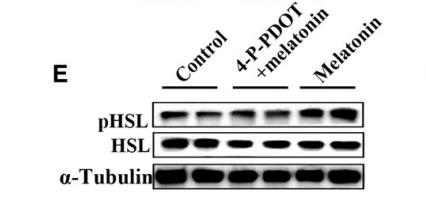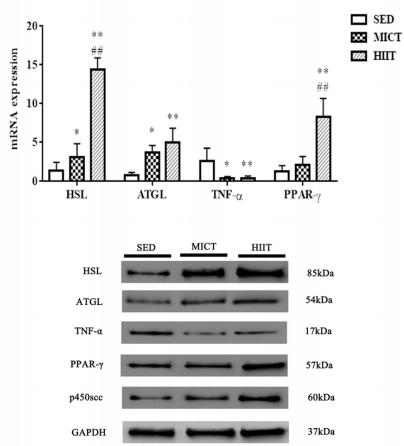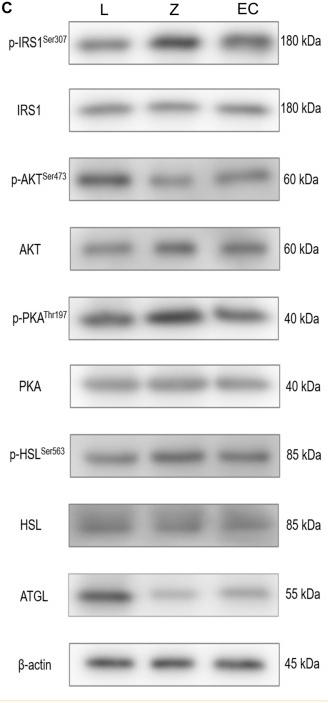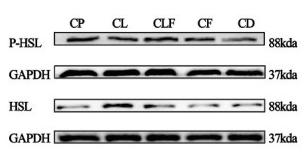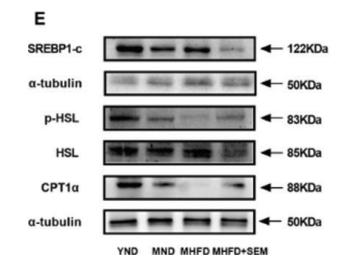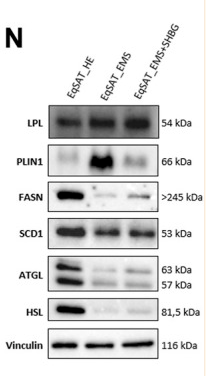HSL Antibody - #AF6403
| Product: | HSL Antibody |
| Catalog: | AF6403 |
| Description: | Rabbit polyclonal antibody to HSL |
| Application: | WB IHC IF/ICC |
| Cited expt.: | WB |
| Reactivity: | Human, Mouse, Rat |
| Prediction: | Pig, Bovine, Horse, Sheep, Rabbit, Dog |
| Mol.Wt.: | 85kDa; 117kD(Calculated). |
| Uniprot: | Q05469 |
| RRID: | AB_2835234 |
Product Info
*The optimal dilutions should be determined by the end user. For optimal experimental results, antibody reuse is not recommended.
*Tips:
WB: For western blot detection of denatured protein samples. IHC: For immunohistochemical detection of paraffin sections (IHC-p) or frozen sections (IHC-f) of tissue samples. IF/ICC: For immunofluorescence detection of cell samples. ELISA(peptide): For ELISA detection of antigenic peptide.
Cite Format: Affinity Biosciences Cat# AF6403, RRID:AB_2835234.
Fold/Unfold
Hormone sensitive lipase; Hormone sensitive lipase testicular isoform; Hormone-sensitive lipase; HSL; LHS; Lipase hormone sensitive; LIPE; LIPS_HUMAN;
Immunogens
A synthesized peptide derived from human HSL, corresponding to a region within the internal amino acids.
- Q05469 LIPS_HUMAN:
- Protein BLAST With
- NCBI/
- ExPASy/
- Uniprot
MEPGSKSVSRSDWQPEPHQRPITPLEPGPEKTPIAQPESKTLQGSNTQQKPASNQRPLTQQETPAQHDAESQKEPRAQQKSASQEEFLAPQKPAPQQSPYIQRVLLTQQEAASQQGPGLGKESITQQEPALRQRHVAQPGPGPGEPPPAQQEAESTPAAQAKPGAKREPSAPTESTSQETPEQSDKQTTPVQGAKSKQGSLTELGFLTKLQELSIQRSALEWKALSEWVTDSESESDVGSSSDTDSPATMGGMVAQGVKLGFKGKSGYKVMSGYSGTSPHEKTSARNHRHYQDTASRLIHNMDLRTMTQSLVTLAEDNIAFFSSQGPGETAQRLSGVFAGVREQALGLEPALGRLLGVAHLFDLDPETPANGYRSLVHTARCCLAHLLHKSRYVASNRRSIFFRTSHNLAELEAYLAALTQLRALVYYAQRLLVTNRPGVLFFEGDEGLTADFLREYVTLHKGCFYGRCLGFQFTPAIRPFLQTISIGLVSFGEHYKRNETGLSVAASSLFTSGRFAIDPELRGAEFERITQNLDVHFWKAFWNITEMEVLSSLANMASATVRVSRLLSLPPEAFEMPLTADPTLTVTISPPLAHTGPGPVLVRLISYDLREGQDSEELSSLIKSNGQRSLELWPRPQQAPRSRSLIVHFHGGGFVAQTSRSHEPYLKSWAQELGAPIISIDYSLAPEAPFPRALEECFFAYCWAIKHCALLGSTGERICLAGDSAGGNLCFTVALRAAAYGVRVPDGIMAAYPATMLQPAASPSRLLSLMDPLLPLSVLSKCVSAYAGAKTEDHSNSDQKALGMMGLVRRDTALLLRDFRLGASSWLNSFLELSGRKSQKMSEPIAEPMRRSVSEAALAQPQGPLGTDSLKNLTLRDLSLRGNSETSSDTPEMSLSAETLSPSTPSDVNFLLPPEDAGEEAEAKNELSPMDRGLGVRAAFPEGFHPRRSSQGATQMPLYSSPIVKNPFMSPLLAPDSMLKSLPPVHIVACALDPMLDDSVMLARRLRNLGQPVTLRVVEDLPHGFLTLAALCRETRQAAELCVERIRLVLTPPAGAGPSGETGAAGVDGGCGGRH
Predictions
Score>80(red) has high confidence and is suggested to be used for WB detection. *The prediction model is mainly based on the alignment of immunogen sequences, the results are for reference only, not as the basis of quality assurance.
High(score>80) Medium(80>score>50) Low(score<50) No confidence
Research Backgrounds
In adipose tissue and heart, it primarily hydrolyzes stored triglycerides to free fatty acids, while in steroidogenic tissues, it principally converts cholesteryl esters to free cholesterol for steroid hormone production.
Phosphorylation by AMPK may block translocation to lipid droplets.
Cell membrane. Membrane>Caveola. Cytoplasm>Cytosol.
Note: Found in the high-density caveolae. Translocates to the cytoplasm from the caveolae upon insulin stimulation.
Belongs to the 'GDXG' lipolytic enzyme family.
Research Fields
· Environmental Information Processing > Signal transduction > cAMP signaling pathway. (View pathway)
· Environmental Information Processing > Signal transduction > AMPK signaling pathway. (View pathway)
· Environmental Information Processing > Signal transduction > Apelin signaling pathway. (View pathway)
· Organismal Systems > Endocrine system > Insulin signaling pathway. (View pathway)
· Organismal Systems > Endocrine system > Regulation of lipolysis in adipocytes.
· Organismal Systems > Endocrine system > Aldosterone synthesis and secretion.
References
Application: WB Species: Pig Sample: adipose
Application: WB Species: Rat Sample:
Application: WB Species: Human Sample: adipose tissue
Restrictive clause
Affinity Biosciences tests all products strictly. Citations are provided as a resource for additional applications that have not been validated by Affinity Biosciences. Please choose the appropriate format for each application and consult Materials and Methods sections for additional details about the use of any product in these publications.
For Research Use Only.
Not for use in diagnostic or therapeutic procedures. Not for resale. Not for distribution without written consent. Affinity Biosciences will not be held responsible for patent infringement or other violations that may occur with the use of our products. Affinity Biosciences, Affinity Biosciences Logo and all other trademarks are the property of Affinity Biosciences LTD.

